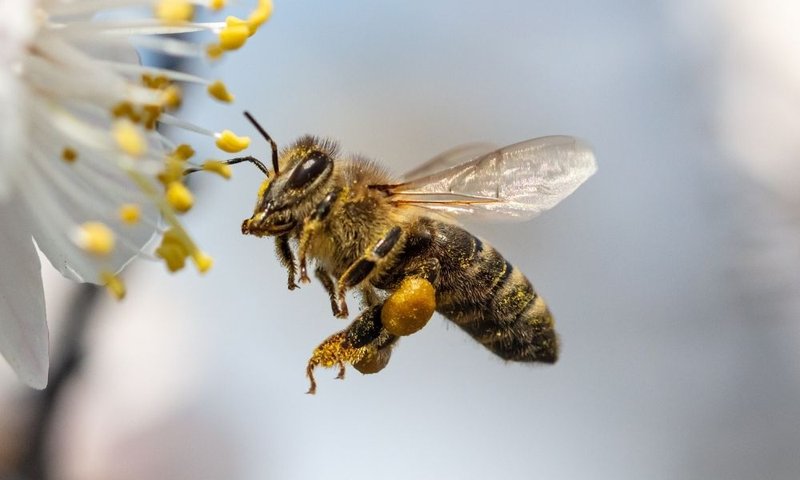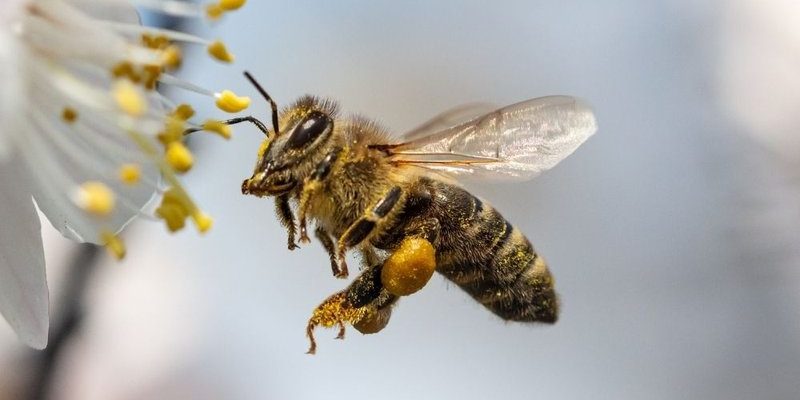
Let’s dive into some of the common myths about honey bees and uncover the truth. Whether you’re a curious newbie or someone who’s always appreciated bees but wants to know more, you’re in the right place. I’ll break down these myths, clear the air, and help you see honey bees in an entirely new light.
Myth 1: All Bees are Aggressive
One of the biggest myths about honey bees is that they are aggressive and always ready to sting. Honestly, that’s like saying all dogs are vicious just because a few might be. Honey bees are generally calm creatures, especially when not provoked. They primarily sting to protect their hive and queen. In most cases, if you leave them alone, they’ll do the same.
You might be wondering how to tell the difference between a honey bee and a wasp or hornet, since those are typically more aggressive. Honey bees are fuzzy, typically golden-brown, and have a rounded body. In contrast, wasps are smooth and slender, often appearing more colorful and shiny. If you see bees buzzing around flowers, chances are they are just going about their business, gathering nectar.
Being cautious around bees is wise, but it’s essential to remember that they’re not out to get you. If you stay calm and avoid swatting or yelling, the chances of getting stung are very low.
Myth 2: Honey Bees Make Honey All Year Round
Here’s the thing: honey bees don’t make honey every month of the year. They primarily produce honey during the warmer months when flowers are abundant. In late spring and summer, the bees work hard to collect nectar from blossoms. Once they have enough, they transform that nectar into honey through a fascinating process of evaporation and enzymatic activity.
You might ask, “But what about winter?” Well, honey bees prepare for the colder months by storing honey to sustain the colony. They typically consume this stored honey when flowers are scarce, which means they need a good supply to see them through the winter. So, those jars of honey you buy in the winter months? They’re the result of a busy bee workforce during the summer.
If you’re interested in beekeeping or simply want to support local honey producers, this seasonal aspect of honey creation is a good thing to keep in mind.
Myth 3: Bees Only Pollinate Flowers
Many people think honey bees are solely responsible for pollinating flowers. While it’s true that they are excellent pollinators, they don’t just stop there. Honey bees also play a critical role in pollinating fruit trees, vegetables, and even nuts. Without them, our food diversity could significantly decrease.
Imagine a world without apples, almonds, or blueberries. It sounds dramatic, but without honey bees and their pollination efforts, many of these delicious and nutritious fruits might become much harder to find. Studies show that roughly one-third of the food we eat relies on pollination from bees, making them essential for our agricultural systems.
So, the next time you bite into a juicy peach or enjoy a garden salad, remember the honey bees that made it possible. They’re more than just honey-makers; they’re vital to our food supply.
Myth 4: Honey Bees Are All the Same
You might think of honey bees as one homogenous group, but that’s far from the truth. There are actually over 20,000 species of bees worldwide, and honey bees are just one small part of that mix. Within the honey bee species, there are also different breeds, like the Italian honey bee and the Carniolan honey bee.
Each breed has unique traits. For instance, the Italian honey bee is known for its sweet temperament and ability to produce large amounts of honey, while the Carniolan honey bee is recognized for its hardiness and excellent foraging skills. The diversity among these bees allows them to thrive in various environments and adapt to local conditions.
Understanding these differences can be essential for beekeepers who want to optimize their hives or simply appreciate the fascinating complexity of these creatures. They’re much more diverse than many people realize!
Myth 5: Honey Bees Die After Stinging
Another common belief is that honey bees die after they sting. While this is true for worker honey bees, it’s not the full picture. When a worker bee stings a mammal, it leaves behind its stinger and part of its abdomen, which ultimately causes its death. However, this does not happen when they sting other insects, as they can retract their stingers.
The reason worker honey bees sacrifice themselves is to protect their hive. They’re not out for revenge but are acting on instinct. The hive and queen are their top priority, and the sting is a last resort. You might feel bad for the bee when you think about this, but it shows just how dedicated they are to their colony.
Understanding this can help inform how we interact with bees. It’s best to avoid provoking them, which helps both the bees and us!
Myth 6: Honey Is Always Yellow
When you think of honey, you probably picture a golden, syrupy substance. But here’s a surprise: honey can come in a variety of colors! The color of honey is influenced by the type of flowers from which the bees gather nectar. For example, clover honey is typically light and clear, while buckwheat honey is dark and robust.
The flavor also varies with color. Light-colored honey tends to have a mild taste, while darker varieties can be richer and more complex. It’s much like wine, where different grapes yield different flavors and aromas.
So, when you see a jar of honey, remember that the world of honey is vast and colorful. It’s more than just sweet; it tells a story about the bees and their environment.
Myth 7: Honey Bees Are Not in Danger
You might think honey bees are plentiful, but sadly, they’re facing numerous threats. Pesticides, climate change, habitat loss, and disease are all contributing to a decline in bee populations. It’s like watching a beloved character in your favorite show slowly fade away. Bees are essential for our ecosystem, and their decline can directly impact our food supply.
Conservation efforts are in place to protect these vital insects, but everyone can help, too. Planting pollinator-friendly flowers in your garden, reducing pesticide use, or supporting local beekeepers can go a long way. Small actions can lead to big changes.
Understanding the challenges honey bees face can inspire you to lend a helping hand. After all, a world without bees would be a much less colorful and delicious one.
Honey bees are remarkable creatures that deserve our admiration and protection. By debunking these common myths about honey bees, we can foster a deeper respect for these hard-working insects. They’re not just honey makers or pests; they’re crucial players in our ecosystem and food production.
So the next time you enjoy a drizzle of honey or spot bees buzzing around flowers, remember the incredible journey they take to sustain our world. Let’s celebrate these tiny farmers and do our part to protect them. Whether it’s planting flowers or simply spreading the word, we all have a role to play in ensuring that honey bees continue to thrive.

